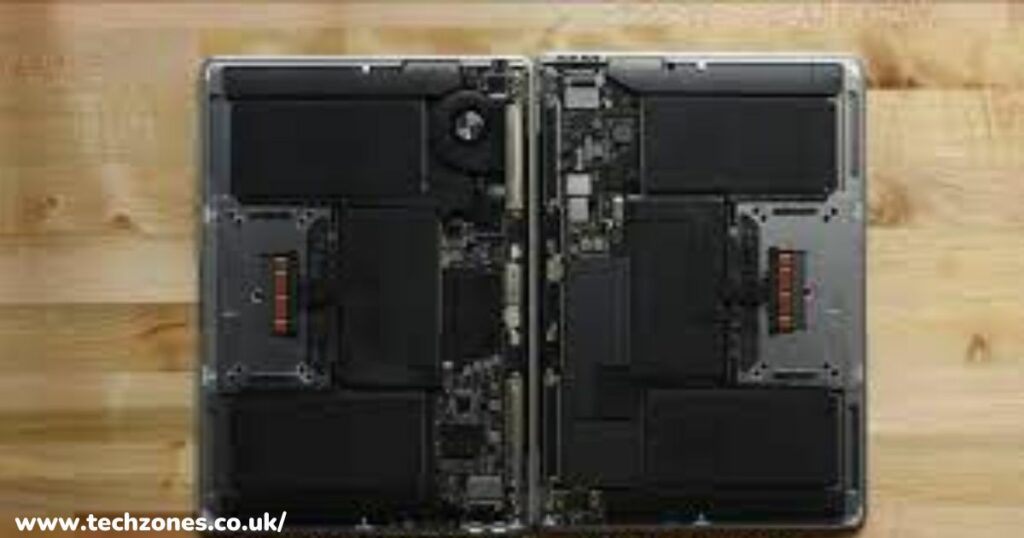The MacBook logic board is the central nervous system of your device, responsible for connecting and controlling all the hardware components. When faced with logic board issues, troubleshooting and repairing them can be a daunting task. However, with the right knowledge and techniques, you can master MacBook logic board repair like a pro. For those who are not able to prevent Logic Board failure, this comprehensive guide will provide you with tips and techniques to help you diagnose and fix common logic board problems.
Understanding the MacBook Logic Board
The MacBook logic board, or the motherboard, is a complex circuit board that houses critical components like the CPU, GPU, RAM, and other chips. It is the central hub, facilitating communication and coordination among these components. Understanding the role and function of each component is essential for successful logic board repair.
Common Logic Board Issues
Logic board problems can manifest in various ways, affecting the overall performance of your MacBook. Some common signs of logic board failure or damage include a non-responsive device, unexpected shutdowns, distorted graphics, or failure to boot up. These issues require a systematic approach to identify and resolve the underlying cause.
Essential Tools and Equipment
You’ll need specific tools to diagnose and repair logic board issues effectively. These include a digital multimeter, logic board diagnostic software, heat gun or soldering iron, and specialized screwdrivers. These tools enable you to test components, analyze voltage levels, and carry out necessary repairs.
Working with delicate electronic components demands careful handling and preventive measures. Before attempting any repairs, it’s crucial to follow safety guidelines. This includes wearing an anti-static wristband, working on an anti-static mat, and disconnecting the MacBook from power. Failure to take these precautions may result in further damage or personal injury. Click here for MacBook Repair Services.
Troubleshooting MacBook Logic Board Issues
When troubleshooting logic board issues, a logical and systematic approach is essential. Start by observing the symptoms and visually inspecting for obvious signs of damage. Next, use diagnostic software to identify specific faults and errors. This step-by-step approach ensures efficient troubleshooting and accurate diagnosis.
Common Logic Board Issues and Solutions: Power-related Issues
Power-related problems can cause your MacBook to refuse to turn on or experience intermittent power loss. To troubleshoot, check the power adapter and the charging cable for any damage. If they are working correctly, the issue may lie with the logic board’s power supply circuitry, which might require expert repair or replacement.
Display and Graphics Issues
If you encounter a blank screen, distorted images, or flickering on your MacBook’s display, it could indicate logic board issues related to the GPU or display connectors. Troubleshooting may involve reseating the display connectors, updating graphics drivers, or, in some cases, replacing the logic board or GPU.
Input/Output Issues
Malfunctioning USB ports, audio jacks, or other peripherals can be frustrating. Before assuming a logic board problem, use different cables or devices to rule out external factors. If the issue persists, it might indicate a faulty logic board component responsible for these functions, necessitating further inspection or component replacement.
Overheating and Cooling
Excessive heat can cause logic board components to malfunction or fail. Dust accumulation, blocked vents, or malfunctioning cooling fans can all contribute to overheating issues. Regularly clean the vents, ensure proper airflow, and monitor fan performance. If the problem persists, it may require professional cleaning or fan replacement.
Data Connectivity Issues
If your MacBook experiences Wi-Fi or Bluetooth connectivity problems, it could stem from logic board issues. Start by resetting the NVRAM and SMC, updating the operating system, and checking for physical damage. If the issues persist, a logic board component responsible for wireless connectivity may require repair or replacement.
Advanced Repair Techniques: Component-level Repair
For more advanced logic board repair, you should delve into component-level troubleshooting and repair. This involves identifying faulty components like capacitors or resistors using a multimeter, removing them using proper soldering techniques, and replacing them with new components. Advanced skills and experience are necessary for this level of repair.
Replacing Faulty Components
In some cases, logic board issues may require replacing faulty components entirely. This process can be complex, as it involves desoldering the defective component and soldering a new one. Using genuine replacement parts and exercising caution to prevent further damage is crucial.
Seeking Professional Assistance
While this guide provides comprehensive troubleshooting tips, there may be instances where professional assistance is the best course of action. Logic board repairs require expert knowledge and specialized skills to ensure a successful fix. Instead of attempting it yourself and risking further damage, we recommend bringing your MacBook to Tech Zones. Our team of professional technicians has the expertise and experience to diagnose and repair logic board problems accurately. With state-of-the-art equipment and a commitment to customer satisfaction, we guarantee efficient and reliable repairs. Refrain from letting your limited knowledge hold you back; entrust your MacBook to the experts at Tech Zones, and let us handle your logic board issues with precision and care.
Conclusion
Mastering MacBook logic board repair is an invaluable skill that empowers you to diagnose and fix common issues, potentially saving time and money. By understanding the various components, employing systematic troubleshooting techniques, and learning advanced repair methods, you can confidently tackle logic board problems. Remember to prioritize safety, stay patient, and know when to seek professional assistance. With practice and dedication, you can become proficient in MacBook logic board repair and keep your device running smoothly for years.


